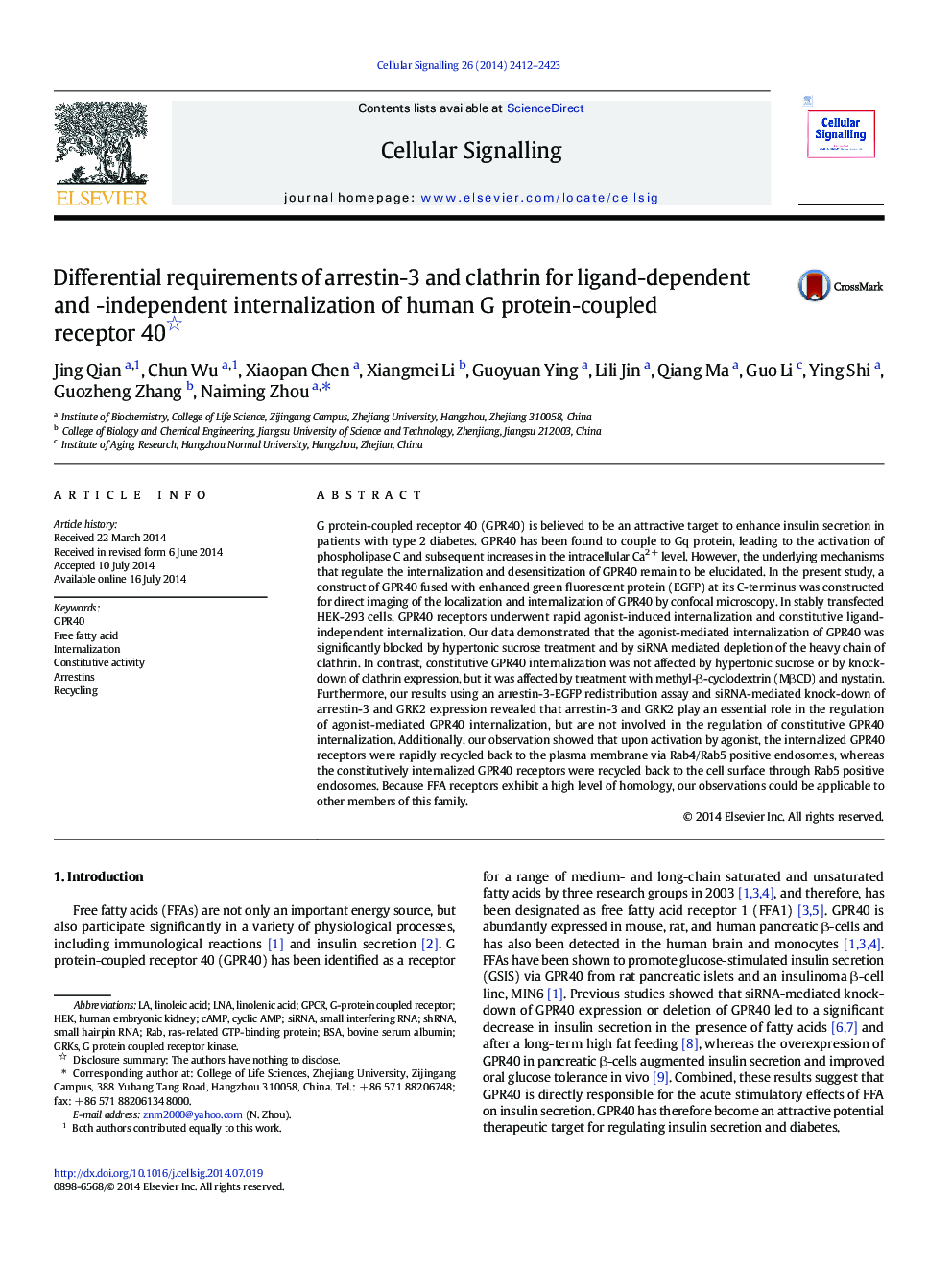| کد مقاله | کد نشریه | سال انتشار | مقاله انگلیسی | نسخه تمام متن |
|---|---|---|---|---|
| 10815176 | 1058457 | 2014 | 12 صفحه PDF | دانلود رایگان |
عنوان انگلیسی مقاله ISI
Differential requirements of arrestin-3 and clathrin for ligand-dependent and -independent internalization of human G protein-coupled receptor 40
دانلود مقاله + سفارش ترجمه
دانلود مقاله ISI انگلیسی
رایگان برای ایرانیان
کلمات کلیدی
LNAG protein coupled receptor kinaseGPR40GPCRHEKshRNAcyclic AMP - AMP cyclicBSA - BSAcAMP - cAMPG-protein coupled receptor - G-پروتئین همراه گیرندهGRKs - GRK هاSmall interfering RNA - RNA تداخل کوچکsmall hairpin RNA - RNA کوچک موی سرsiRNA - siRNAbovine serum albumin - آلبومین سرم گاوLinoleic acid - اسید لینولئیکLinolenic acid - اسید لینولینیکFree fatty acid - اسید چرب آزادRecycling - بازیافتInternalization - داخلی سازیArrestins - دستگیریRab - ربConstitutive activity - فعالیت مؤثرhuman embryonic kidney - کلیه جنین انسان
موضوعات مرتبط
علوم زیستی و بیوفناوری
بیوشیمی، ژنتیک و زیست شناسی مولکولی
زیست شیمی
پیش نمایش صفحه اول مقاله

چکیده انگلیسی
G protein-coupled receptor 40 (GPR40) is believed to be an attractive target to enhance insulin secretion in patients with type 2 diabetes. GPR40 has been found to couple to Gq protein, leading to the activation of phospholipase C and subsequent increases in the intracellular Ca2 + level. However, the underlying mechanisms that regulate the internalization and desensitization of GPR40 remain to be elucidated. In the present study, a construct of GPR40 fused with enhanced green fluorescent protein (EGFP) at its C-terminus was constructed for direct imaging of the localization and internalization of GPR40 by confocal microscopy. In stably transfected HEK-293 cells, GPR40 receptors underwent rapid agonist-induced internalization and constitutive ligand-independent internalization. Our data demonstrated that the agonist-mediated internalization of GPR40 was significantly blocked by hypertonic sucrose treatment and by siRNA mediated depletion of the heavy chain of clathrin. In contrast, constitutive GPR40 internalization was not affected by hypertonic sucrose or by knock-down of clathrin expression, but it was affected by treatment with methyl-β-cyclodextrin (MβCD) and nystatin. Furthermore, our results using an arrestin-3-EGFP redistribution assay and siRNA-mediated knock-down of arrestin-3 and GRK2 expression revealed that arrestin-3 and GRK2 play an essential role in the regulation of agonist-mediated GPR40 internalization, but are not involved in the regulation of constitutive GPR40 internalization. Additionally, our observation showed that upon activation by agonist, the internalized GPR40 receptors were rapidly recycled back to the plasma membrane via Rab4/Rab5 positive endosomes, whereas the constitutively internalized GPR40 receptors were recycled back to the cell surface through Rab5 positive endosomes. Because FFA receptors exhibit a high level of homology, our observations could be applicable to other members of this family.
ناشر
Database: Elsevier - ScienceDirect (ساینس دایرکت)
Journal: Cellular Signalling - Volume 26, Issue 11, November 2014, Pages 2412-2423
Journal: Cellular Signalling - Volume 26, Issue 11, November 2014, Pages 2412-2423
نویسندگان
Jing Qian, Chun Wu, Xiaopan Chen, Xiangmei Li, Guoyuan Ying, Lili Jin, Qiang Ma, Guo Li, Ying Shi, Guozheng Zhang, Naiming Zhou,